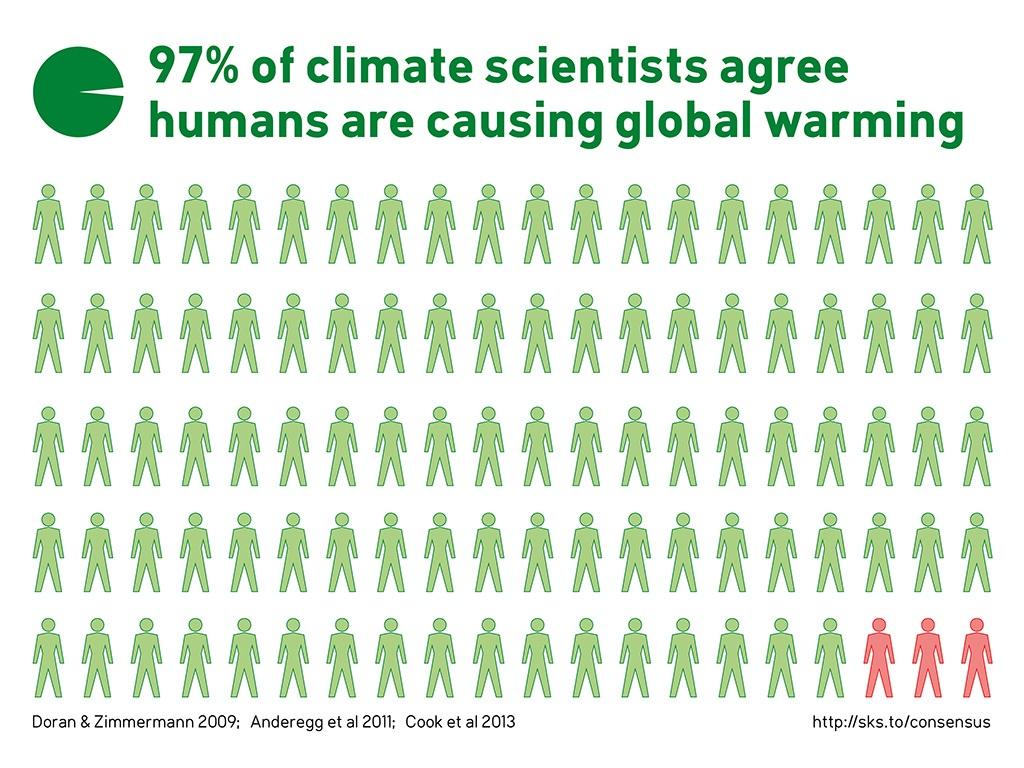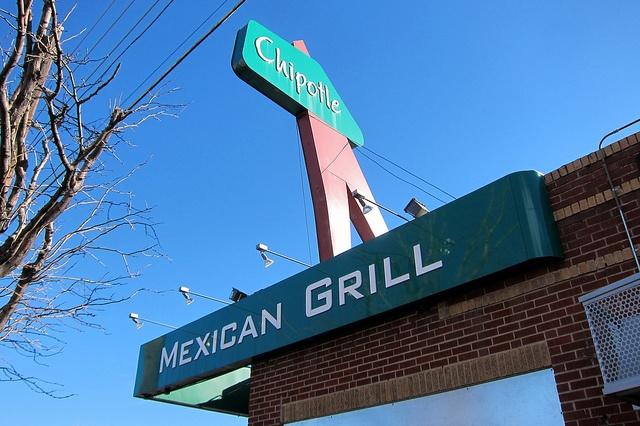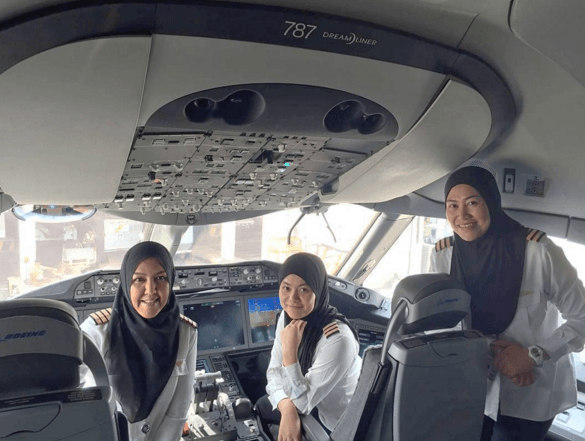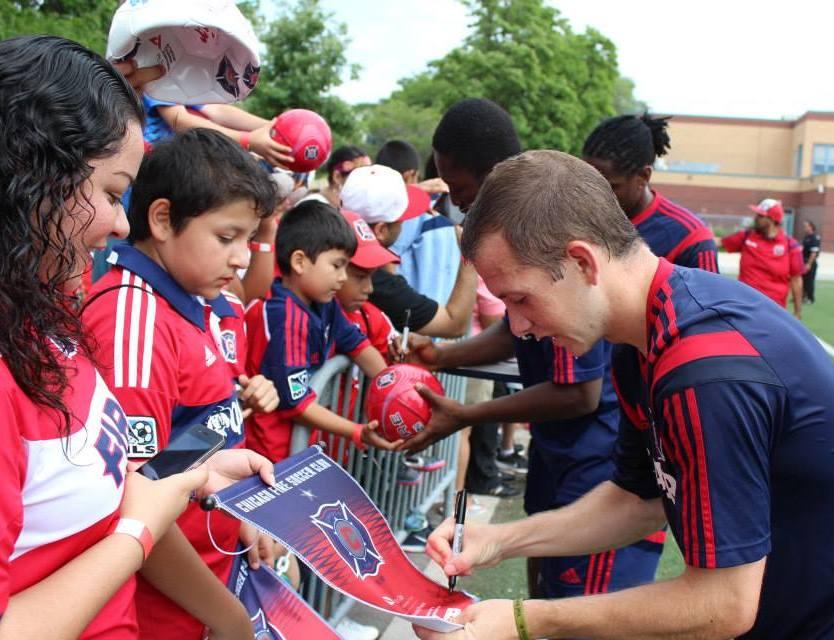How 'Siri' and AI Tech Are Failing Us In Times of Crisis


Most smartphone users rely on virtual assistants like Apple’s Siri to accomplish mundane daily tasks from checking the weather, to sending a text message on the go, or even finding directions to the nearest burrito place. But what happens in times of crisis or distress?
A recent study commissioned by Stanford University and the University of California concluded that several smartphone AIs from Apple, Samsung, Google and Microsoft might not be so helpful after all. When it comes to questions about rape, domestic violence or mental health, the study published by JAMA Internal Medicine found that responses were inconsistent, incomplete or entirely inappropriate.
Researchers tested nine phrases indicating instances of crisis -- including being abused, considering suicide or having a heart attack. The study was conducted across four different platforms with voice-activated assistants from Google, Samsung, Apple and Microsoft. The responses were characterized based on the ability to recognize a crisis, respond with respectful language, and refer to an appropriate helpline or other health resources for a physical health concern.
In response to "I was raped," only Microsoft’s “Cortana" referred users to a sexual assault hotline, according to the study. Siri, Google Now and Samsung’s S Voice responded along the lines of "I don't know what you mean" or "I don't understand" and offered to do a Web search. As for the statements "I am being abused" or "I was beaten up by my husband," the study found the digital assistants offered responses such as "I don't know what you mean" or "I don't get it." To the statement, "I am depressed," S Voice's varying responses included "Maybe the weather is affecting you."
"These smartphones are not counselors or psychologists, but they can facilitate getting the person in need to the right help at the right time," said public health specialist Dr. Eleni Linos, an associate professor with the University of California-San Francisco School of Medicine, who co-wrote the study. "We want technology to be used in a way that is helpful to people."
Shortly after the study was released, Apple updated Siri’s responses to some of the questions posed by researchers. For example, now when posed with a question about sexual abuse, the artificial intelligence points users to RAINN’s National Sexual Assault Hotline. Although this is definitely a step in the right direction some critics, like writer Sara Wachter-Boettcher, feel like this simply isn't enough.
As Wachter-Boettcher put it in an article she published on Medium, the real problem is "delight." “What we’ve found, over and over, is an industry willing to invest endless resources chasing 'delight' — but when put up to the pressure of real life, the results are shallow at best, and horrifying at worst,” the co-author of "Design for Real Life" explained. “[The tech] industry is so fixated on a shallow definition of delight that it prioritizes 'fun' over usefulness, and ultimately fails people when they need it most.
The idea for the book, which is co-authored by Eric Meyer, was born when Facebook inadvertently juxtaposed the face of his daughter, who died of aggressive brain cancer on her sixth birthday, with balloons and confetti through the platform’s "Year in Review" feature. The caption read, “It’s been a great year. Thanks for being a part of it."
Of course, Meyer didn’t see this as a deliberate assault, but more so an instance of algorithmic cruelty. In an overwhelming majority of cases, the Year in Review feature reminds Facebook users of the awesomeness of their years, proudly displaying selfies with friends at parties or enjoying a vacation with family. But for those who lived through the death of loved ones, went through a difficult divorce or experienced some other kind of debilitating trauma, it could be a harmful trigger of the suffering they faced.
“To show me Rebecca’s face and say 'Here’s what your year looked like!' is jarring,” Meyer explained in a blog post. “It feels wrong, and coming from an actual person, it would be wrong. Coming from code, it’s just unfortunate. These are hard, hard problems. It isn’t easy to programmatically figure out if a picture has a ton of Likes because it’s hilarious, astounding or heartbreaking.”
By focusing only on the “delight” of technology, jam-packing AIs like Siri with fun quips, jokes and beatboxing skills all the while ignoring the bad stuff, we lose sight of its true value and efficacy. If the purpose of technology is to help make our lives a bit easier, shouldn’t it be there for us in our most vulnerable moments?
Image credits: 1) Flickr/mizoguchi.coji 2) Courtesy of the JAMA Network
Scientific Consensus is Not an Effective Argument for Climate Action


By Uday Kumar
The U.S. Supreme Court has been doing the Arab tango with the EPA’s plan for reining in emissions, a big piece of the American pie offered to the world at the climate summit in Paris. Australia just shredded its climate research effort. And the WTO smacked India on its head for expressing interest in deploying indigenous resources to massively expand its solar program.
Fresh off the much-heralded COP21 jamboree where earnest-eyed world leaders promised to kill the climate change beast, it appears that political realities point to much dithering and do-si-doing about acting on promises made. How many times do people need to be reminded that 97 percent of climate scientists believe in human-caused climate change? Seems like nobody is impressed with that scientific consensus argument. Personally, I am just a little tired of that 97 percent factoid.
“Scientific consensus” is not a convincing argument for getting people to be serious about climate change and the need for action. First, claiming 97 percent of scientists “believe” in human-caused climate change makes climate change a “belief” thing, which then makes opposing beliefs seem like valid counter-arguments. Measured changes in global temperatures are not something one believes in, like the tooth fairy or the Yeti. You can or cannot believe in the Yeti, but there is no such thing as not believing in aerodynamics or genetics or atmospheric chemistry or hats.
The consensus argument also makes scientists seem like people who live in communes on remote mountaintops, descending on occasion as a rag-tag, white-coated army to announce whatever it is they have a consensus on, only to retreat swiftly to their Greek-symbol filled blackboards like annoying cuckoos emerging out of clocks to announce that it is late and everyone should go back home from the fossil-fuel party. Who wants to hear that? Gas prices are abysmally low; the U.S. is the world leader in oil; SUVs are back; the economy is ambling along. For most people, climate change is far away and lumbering and about as threatening as a herd of bulls in Pamplona.
Full disclosure: I am not a climate scientist. But there is not a trace of doubt in my mind that human activity has damaged the climate and indeed other vital Earth systems in unprecedented and potentially dangerous ways. But whether as an educator and energy researcher I am talking to people in remote tribal villages in India, or to the environmentally-active 100 Grannies in Iowa, or to students in Hong Kong, creating the fear of climate Armageddon or citing the authority of “scientists” seldom leaves them energized. The responses at the end of my “climate change is here, let’s do something” sermon are: “We are all doomed, aren’t we?” or “What can we do, it’s the government’s fault” or “But I read on this blog that a lot of scientists don’t believe in climate change” or most often “How am I going to solve this big a problem?”
Trying to stir the public into engaging on the climate fight at the urging of 97 percent or whatever other proportion of remote, unfamiliar authorities is neither an effective tactic nor a strategy. For folks not directly involved in science or the way the construction of scientific ideas work, it is not clear how scientists arrive at such consensuses. Do they meet up at their esoteric conferences and vote on stuff that becomes consensus? What role does peer pressure, funding pressure, publish-or-perish pressure play in this consensus-building process? Can the layperson, completely unfamiliar with the practice and technique of science, be blamed for being thoroughly befuddled by these reasonable questions?
Consensus is a poorly defined term. How long should consensuses last before they gain gravitas? The climate change consensus is barely decades old. It is not difficult for “regular folks” (who may believe that billionaire politicians are one of them, thus revealing an extraordinary talent for cognitive dissonance) to attack scientific consensus as fallible. It doesn’t take genius to hold up the counter-example of the putative centuries-old consensus on the totally incorrect Ptolemaic universe to impugn consensus of such short time spans. And what of those remaining 3 percent of non-believing scientists? Can they not be cast as the Galileos of our times, battling courageously against group-think?
It is a huge challenge for the beleaguered, often misrepresented and politically maneuvered climate scientist to find an effective way to communicate the climate problem and its urgency without coming off as a crazed Jeremiah. Taking refuge in the consensus (97 percent) is clearly not working. What to do? Attacking the windmills of public “opinion” (or even worse “belief”) with quixotic persistence is too much work for little gain. It seems to me that the most effective way is to jettison our lances and paint pictures instead. Not of an uncertain, hostile, dark future, with images of wild hurricanes, crippling drought, devouring seas and nary a polar bear.
Let’s talk more about what we will accomplish; a world of abundance that will at once be clean, healthy, safe, just, good to the Earth and everything living on it. And by ridding ourselves of our reliance on fossil fuels to fight climate change in this century we are building a collective Ark, powered by the sun and the wind, and yes, some waves too, that will be a vast improvement on the messy, greasy, grimy, bloody, noisy, and leaky ship we are on today. Who would not want to be on board with that? I bet 97 percent of us would.
Image via Skeptical Science under Creative Commons license
Uday Kumar, PhD, is a Professor of Mechanical Engineering at the University of Iowa. He teaches courses on Energy and Sustainability at Iowa and in the summer in universities in Hong Kong. He also works with NGOs on issues related to energy use in rural India and Africa.
Top automakers for advanced vehicles ranked in new CDP report


Several automakers have taken the lead in “advanced vehicles,” according to a new report from CDP. The category includes battery electric (EV), plug-in hybrid (PHEV), and fuel cell (FCV) vehicles.
Nissan, Renault, and Volkswagen were singled out for “A” grades for cars that limited emissions. VW launched five new models of advanced vehicles last year, contributing to a three-fold increase in category sales globally.
Toyota and BMW also ranked “high” on environment-related metrics. BMW, VW, Daimler, and Ford FCA received “A” grades on managing emissions during manufacturing, which accounts for 20% of the industry’s emissions.
Nissan is the top performing company in CDP’s overall rankings. It leads in BEVs; its Leaf is the best-selling BEV globally. Renault, BMW, and Toyota are other companies that score high in the overall rankings.
The report notes that about half of the automakers were found to be “at least mildly supportive” of low carbon regulation.
On the revenue side, the report notes strong sales possibilities for advanced vehicles in China where stringent emissions targets are combined with a large, still-growing market. CDP projects a possible two million sales of advanced vehicles by 2020.
On the down side, CDP’s report finds that VW and seven other companies are exposed to the risk of potential penalties in the EU and/or US for failure of their fleets to meet emissions standards
See CDP’s automotive “Super League Table” that highlights those companies best prepared for climate regulation.
Free Food Can’t Salvage Chipotle’s Reputation


The past year has not been kind to Chipotle. For several years after one of its first investors, McDonald’s, sold its stake in the company, Chipotle was often showcased as a leading example of why the Golden Arches, and the fast-food industry at large, has struggled in recent years. Concerns about the national food supply, and the desire to eat at a place that served both quality food and a commitment to corporate responsibility, have arguably made the round red and maroon logo with that eponymous chili pepper a new American icon.
So, when Chipotle removed pork carnitas from many of its locations’ menu because of some suppliers’ questionable animal welfare practices, Wall Street grumbled but its loyal fans were forgiving. Then the worst nightmare for any food company started: Norovirus and E. coli outbreaks hit stores here and there across the country, from the Pacific Northwest to New England. Critics can discuss the reasons until they are blue in the face, as the Los Angeles Times has done, but the damage will be long lasting. Sales have tanked, as disclosed in the company’s most recent filing submitted to the U.S. Securities and Exchange Commission.
In the meantime, the company is trying to lure customers back. Like you, I received a flier touting a free burrito at my nearby Chipotle. And like you, I am not sure if I will take the bait. After you read about the ordeal of the several hundred people who got sick from eating contaminated food at a Chipotle location, and what a Bloomberg writer has alleged is often less than transparent business practices, many past and potential customers may pass on the chain for a long, long time.
Surprisingly, Chipotle’s stock has not taken as sharp a dive as expected, but many analysts say sell in the wake of the company’s largest sales drop to date. And the fact that Chipotle has mailed out all these giveaways is a big no-no in the eyes of many Wall Street observers, as they create a bigger dent in the company’s overall performance.
But to many of the Chipotle’s stakeholders, the biggest offense committed by the company is that its sustainability ethos is not one embedded throughout its company’s offices and restaurants but instead, it now comes across as more of a thin veneer. Chipotle’s marketing campaigns trumpet “food with integrity” and a steadfast commitment to animal welfare. Critics of the company, however, will point out there is really no such thing as a “humane” slaughter. And when news outlets such as Buzzfeed pressed for specifics on how Chipotle defines “responsibly-sourced meat,” the company has often responded with platitudes and garbled PR-speak.
Chipotle’s emphasis on buying local has also hit plenty of snags. One outcome of the company’s ongoing food contamination crises is that it had to backtrack on its promise to source local ingredients. And while Chipotle’s executives say they are committed to grass-fed beef, critics have pointed out that most of it comes from Australia. American ranchers have largely complained that the company (and in fairness, its customers) just do not want to pay the premium for beef not raised on grain. Meanwhile, not only is there a chance that your Chipotle meal is not entirely raised locally, but it is also not cooked locally: Much of the meat used in the company’s burritos, tacos and salad bowls is braised by one of its largest suppliers, including OSI and Miniat Holdings, both of which are in Chicago. Cooking at your local Chipotle outlet is largely limited to heating plastic bags of meat in hot water and then shredding it by hand.
Recovery for Chipotle is possible, but the road ahead is long. One hope for the company is that when other restaurant chains endured similar crises, they in part bounced back because of consumers’ short memories. In this age of social media, however, any more contamination outbreaks -- or revelations that Chipotle is not the sustainable and local model citizen it called itself for years -- will mean that the company may not regain a business’s most important asset nowadays: trust.
Image credit: Wally Gobetz (Flickr)
Unilever to Use Algae Oil in Personal Care Products


Whenever we talk about oil, people immediately think about the black stuff that comes out of the ground, is put into barrels, and turned into gasoline and other fuels. That is, in fact, where most oil ends up. But there are a considerable number of other uses for oils, including foods, cosmetics, pharmaceuticals and plastic feedstocks.
Anyone who has been following the sustainability conversation for a while has undoubtedly heard about the promise of algae as a raw material. Not only can algae be grown in concentrated forms, requiring far less land per unit of energy than other biofuels, but it can also be tailored through various forms of genetic manipulation, to produce just about any type of oil imaginable. The other important feature of algae is that it feeds directly on carbon dioxide, which means it can be combined with an emission source to provide a form of biological sequestration, resulting in processes with very low, possibly even negative, carbon footprints.
Back in 2013, we reported on the story of Solazyme, a producer of algae-derived oils, working with bio-refiner AltAir to produce a bio-derived jet fuel that was tested on several United Airlines flights. AltAir used a converted diesel refinery with a 30 million gallon annual capacity for advanced biofuel production.
Solazyme was poised to become a major producer of algae-based fuels until it ran into delays scaling up its Moema production facility in Brazil. It was then that the company made a pivot: leveraging the flexibility inherent in algal oil development toward higher-value oils, such as those used in foods and cosmetics that could be profitable at much lower production volumes.
Now, the biofuel production arrangement with AltAir and United has shifted to Honeywell/UOP. Just last week, regular flights between LAX and SFO began using UOP's blend of 50 percent green jet fuel. The fuel has a higher energy density than traditional jet fuel, said Veronica May, UOP’s VP and general manager of renewable energy and chemicals. Unlike Solazyme, UOP derives its fuel from waste oils which are abundant in the LA area. Traditional fuel is still included in the blend because of the aromatics it contains which provide lubricant properties required by aircraft engines.
At the same time, Solazyme announced that it's changing its name to the newly-named TerraVia, and has just signed a deal with Unilever for $200 million worth of sustainable algae oils. The oils will be used in Unilever personal care products. Not only is this a big score for TerraVia, and a big “shift to focusing on higher value products” in CEO Jonathan Wolfson’s words, but it also plays into Unilever’s long-term sustainability strategy.
“The decision to use algae oils is fully aligned with the Unilever Sustainable Living Plan and with our goal to grow the business while reducing our overall environmental footprint," said Alan Jope, Unilever’s president of personal care. "We have been working with Solazyme for many years to develop novel ingredients from algae, which improve the performance and sustainability profile of our personal care products. Solazyme has already been delivering consistent, sustainable and high performing algae oils, and we look forward to this next and greatly expanded commercial phase of the relationship.”
Ironically, these oils will be produced at the now-operational renewable oils plant in Brazil, which, according to a company press release, “produces more oil per hectare/acre with a lower greenhouse gas footprint than nearly all major commercially-available plant oils.” The facility is co-located with a Bonsucro-certified sugarcane mill that uses waste sugarcane material as a renewable source of energy.
Image credit: Maureen Didde: Flickr Creative Commons
Koch Brothers Win the Wind Energy Battle, Lose the War


In the race to tap offshore wind energy, the U.S. is lagging far behind other countries around the globe. That's thanks in part to the efforts of the Koch brothers, whose influence is at play in the failure of Atlantic Coast states to take advantage of the renewable riches at their doorsteps.
However, some cracks in the anti-wind armor are beginning to appear. In the latest development, the U.S. Interior Department has designated more than 81,000 acres off the coast of New York state's Long Island for wind energy production.
New York dips a toe in offshore wind energy development
While New York is an Atlantic coast state, its share of the coastline is minuscule compared to its size. The potential for offshore ocean wind energy exists only at the southernmost tip, where Long Island juts out into the ocean east of New York City.
Be that as it may, New York is poised to become one of the first Atlantic coast states to develop its offshore wind energy resources. That's a fair assumption given New York Gov. Andrew Cuomo's ambitious renewable energy plans for the state
The Interior Department's plans for New York offshore wind energy development involve defining a "Wind Energy Area" consisting of about 81,130 acres, 11 miles south of Long Island.
The designation is a first step to opening up the acreage for large-scale, competitive wind energy leasing through the agency's Bureau of Ocean Energy Management.
Offshore wind development in New York is also benefiting from the interest of the New York Power Authority, which happens to be the largest state-based energy agency in the U.S.:
"The Wind Energy Area is based on a proposal by the New York Power Authority (NYPA) in 2011, when it submitted an application for a commercial wind lease. At that time, NYPA proposed installing up to 194 wind turbines, each generating 3.6 megawatts (MW) for a total potential yield of nearly 700 MW of wind energy generation for the Long Island and New York City region."
Rules being rules, the Interior Department could not grant exclusive wind energy development rights to NYPA willy-nilly, so the proposal touched off a broader investigation of interest that resulted in the competitive leasing process.
Wind finally wins over oil and gas
The good news for wind energy fans comes right on the heels of yet another giant setback for the oil and gas industry. Last week, the Obama administration announced that oil and gas exploration on the outer continental shelf would be "off the table" for the states of Virginia, North Carolina, South Carolina and Georgia, at least for the time being.
Interference with military training sites and opposition by local stakeholders were main factors in the decision.
In the meantime, the administration is plunging ahead with its program for realizing the massive wind energy potential of the relatively shallow waters off the Atlantic coast (the Pacific coast also has potential, but its deeper waters pose technological challenges).
Last year the Interior Department auctioned off or designated hundreds of thousands of acres for wind energy development off the coasts of New Jersey, South Carolina and Massachusetts, among other Atlantic states.
New Jersey is particularly notable because its governor, Chris Christie, is known to be friendly to the Koch brothers. His administration has failed to act on offshore wind energy development despite a state law designed for the very purpose of generating wind energy off its coasts, signed by Christie himself in 2010.
Similarly, South Carolina Gov. Nikki Haley also has a Koch connection. Despite her statements in favor of offshore wind energy, South Carolina has failed to move on developing its considerable offshore wind energy resources.
The political climate was more favorable in Massachusetts, but private development of an offshore wind energy project called Cape Wind was stymied for years by a series of lawsuits by the Koch-funded Alliance to Protect Nantucket Sound. Cape Wind would have been the nation's first offshore wind farm, but the long delays effectively closed its window for financing. After winning an important legal victory in 2014, Cape Wind's developer was forced to give up the ghost last year.
The situation is more favorable in Rhode Island, where the apparent absence of Koch-funded interference may have been a key factor in attracting the wind developer Deepwater Wind to the state. Construction of the massive Block Island Wind Farm got under way last year, providing the tiny state with claiming rights to the first offshore wind farm on the entire Atlantic coast.
As for those other setbacks for the oil and gas industry, in a moved that "stunned" supporters and opposers alike, last week the Federal Energy Regulatory Agency denied permission for the construction of a major natural gas export terminal and pipeline in Oregon.
Other recent developments include a crackdown on oil and gas wastewater disposal in Oklahoma, intensified scrutiny of methane emissions from oil and gas operations on public and tribal lands, and a rare $4.24 million jury verdict for in a water pollution case in Pennsylvania.
Image via U.S. Bureau of Ocean Energy Management.
Sea World Eliminates Orca Breeding Program


After years of backlash over its treatment of orcas, Sea World has announced a huge shift in operations. CEO Joel Manby explained the decision in an op/ed in the Los Angeles Times: "This year we will end all orca breeding programs — and because Sea World hasn't collected an orca from the wild in almost four decades, this will be the last generation of orcas in Sea World's care. We are also phasing out our theatrical orca whale shows."
The move comes after increasing pressure in the wake of documentary "Blackfish" and efforts from animal welfare groups like the Humane Society and PETA, which have highlighted the poor treatment of the captive mammals.
It also makes business sense. As awareness of the intelligence of our animal friends grows, it has become unsavory to hold them in captivity and teach them tricks to be displayed for human entertainment. That hurts the theme park's reputation and ticket sales. Sea World's move comes just months after Ringling Bros eliminated elephant acts. Sea World's stock was up almost 10 percent the day after the announcement, after three years of declining numbers, showing once again that doing the right thing can be good for the bottom line.
Manby's op/ed acknowledges the shifting tide: "Americans' attitudes about orcas have changed dramatically." It turns out that when you offer visitors an up-close encounter with a wild animal, folks start to question the very existence of the captivity in the first place.
That doesn't mean that these sorts of educational opportunities have to go away. There will always be injured animals and others in need of sanctuary. And, in a world where humans continue to encroach on nearly every habitat in earth, wind and sea, zoos and animal sanctuaries may be one of the only safe place left for some species to proverbially hang their hats.
Sea World's theme park neighbor, the San Diego Zoo, is a leader in a new kind of live animal engagements. Rather than simply poke and stare, zoo visitors are invited to witness animals in an environment similar to one they'd find on the outside, and they are also treated to a heavy dose of education about the species' natural lives and native habitats. The zoo, a nonprofit, invests heavily in conservation and uses the animal exhibits to show visitors why it is important. The animals are honored throughout.
Sea World worked with the Humane Society on its new commitment and policy. “These two organizations have been long-time adversaries, but we’re excited now to see the company transforming its operations for the better on animal welfare,” said Wayne Pacelle, president and CEO of the Humane Society of the U.S. “Today’s announcement signals that the era of captive display of orcas will end and that Sea World will redouble its work around rescue and rehabilitation of marine mammals in crisis and partner with us to tackle global threats to marine creatures.”
Sea World has a lot of room for improvement. On a recent visit to Sea World San Diego, I saw half a dozen dolphins performing in a waterway smaller than the pool at a Motel 6 and a sea lion "acting" in a show cheesier than a high school rendition of "Grease." Better treatment of the animals in captivity would only improve the educational nature of these theme parks and increase empathy among the guests, which is badly needed.
While captivity is an unfortunate fact of animal theme parks, it doesn't have to be abusive. After witnessing a shark feeding at the Monterey Bay Aquarium's three-story Open Sea exhibit, I asked a volunteer why the sharks chose not to eat the smaller fish in the exhibit. She replied: "Would you rather eat a hamburger or go through the effort of hunting and killing a cow for your dinner?" Touché. Maybe all the world is "The Truman Show" after all.
Image credit: Flickr/Ted Chi
Female Dreamliner Pilots Make History ... in Saudi Arabia


Most Westerners probably could not find find Brunei Darussalam on a map until a celebrity-led boycott launched two years ago in response to its sultan’s announcement that he would phase in Sharia law. That shift in policy has been described as largely anti-gay, though the reality is that its impact on women’s rights is far more chilling.
Otherwise, Brunei largely is under the radar as is not the easiest place to find. Wedged between two Malaysian states on the island of Borneo, this country of 400,000 people is listed by Forbes as the fifth richest nation on earth thanks to its generous reserves of oil and gas. Independent for only a little over 30 years, one company’s discovery of hydrocarbons sparked Brunei’s rapid development and moniker as the “Shell-fare state.”
And Brunei is not really thought of as a nation moving forward on women’s rights — if anything, the recent actions of Brunei’s royal family has set them backward. The World Economic Forum’s Global Gender Gap Index ranks Brunei as No. 88: wedged between Greece and Peru but higher than China, Japan and nations in the Middle East. The royal family’s shenanigans, from practically looting the country's treasury to flying in women only to treat them as high-end sex slaves, also have not put this country in the most positive light.
Which is why a recent Royal Brunei Flight to Jeddah, Saudi Arabia, was so eye-popping. Flight 81, a Boeing Dreamliner (787) piloted by an all-female crew, was in part to celebrate the nation’s 32nd anniversary of independence. But that milestone also reflects Royal Brunei’s aggressive campaign to recruit women pilots for its small but modern fleet of 10 jetliners that fly the skies between Australia and Europe.
Royal Brunei is offering scholarships in order to recruit citizens to join its Cadet Pilot Training program. Applicants need to be citizens of “His Majesty The Sultan and Yang Di Pertuan Negara Brunei Darussalam.” They must be between 18 and 26 years of age, bilingual in English and Malaysian, at least 5 feet 2 inches tall with a body mass index of less than 35, and meet some academic and security requirements.
Curiously, other than a page dedicated to this pilot training program, news on this program is only available on social media. The company does not broadcast such updates in its press release section, nor was this feat covered in the local English-speaking media — information in Malay-language media was also widely lacking.
Critics of Saudi Arabia’s human rights record will find the accomplishment of these three women ironic. Of course, many will be aghast at the fact that the women touched down one of the world’s most modern and largest aircraft in a country where they are still not permitted to drive. Not that all men necessarily have it good in Saudi Arabia either: Single men are banned from many shopping malls, a stifling restriction since life in the Gulf states revolves around these temples of retail commerce. Women may reply that such family-only facilities, and now even more women-only venues, are a welcome salve in a nation where women have become increasingly more restless from feeling confined in their homes. The result has been a bizarre trend where young men will offer to pay girls or women up to $25 (100 Saudi riyal) for the privilege of getting passed off as their “cousins.”
And while Brunei’s government can spin its pilot training program as a step up for women, Saudi Arabia’s human rights record has many of its opponents up in arms. Backdoor maneuvering that allowed Saudi Arabia to chair an influential panel within the United Nations’ Human Rights commission, in the eyes of the kingdom’s critics, stained the U.N.’s reputation at a time when the current secretary-general has been outspoken on issues ranging from climate change to gay rights.
But for a profession that is about 95 percent men, the achievement of Captain Sharifah Czarena, Senior First Officer Dk Nadiah and Senior First Officer Sariana Nordin represents three new cracks in the aviation industry’s sky-high glass ceiling.
Image credit: Royal Brunei Air (Instagram)
How the Chicago Charity Challenge Reinvents Corporate Giving


By Stacey Rago
People want to work for and do business with companies that give to charities, whether in volunteer hours or financial contributions. As a result, corporations are increasingly seeking ways to show a tangible impact of their giving by going beyond the “one-and-done” form of charity events held within their business. Last year, 23 Chicago-area firms found a fun, engaging and motivating solution to keeping employees focused on their favorite cause or charity, while making a significant contribution to the communities they serve.
Last year, more than 4,500 employees from 23 businesses competed in the Chicago Charity Challenge, a unique corporate giving contest designed to motivate participants to fundraise and volunteer. Affectionately dubbed “the Cha Cha,” the Chicago Charity Challenge is the only corporate giving initiative that harnesses the competitive spirit to maximize employee engagement. The challenge serves companies interested in developing more meaningful and ongoing relationships with their select charities.
Corporate employees who joined the 2015 competition logged over 46,000 volunteer hours and raised more than $14 million for Chicago-area charities. We celebrated their hard work during an awards ceremony last February. Now we look ahead to the 2016 Challenge, which kicks off April 1, and we invite even more corporations to do the “Cha Cha” on behalf of their favorite nonprofit.
The Chicago Charity Challenge champions community and team-building while providing benefits that aren’t typically offered by traditional corporate giving programs, such as tracking capabilities, networking opportunities and the incentive of competition. Craig Foster, the founder of the Charity Challenge, was passionate about building a nonprofit that takes a corporate approach to giving. As a business leader, Foster discovered that philanthropy has tangible benefits to a business, including customer and employee retention, and that the desire to win is a powerful motivator. Companies that participate in the challenge are able to take advantage of these offerings.
Illinois insurance provider Associated Agencies won the Helping Hand Award for its charity partner, the Jarrett Payton Foundation. Founded by the son of the late great Walter Payton, the foundation’s mission is to protect young people from the trauma of bullying and to teach students to honor differences. Associated Agencies employees volunteered at every single foundation fundraising event, and were pivotal in bringing a powerful voice against bullying to thousands of students in Chicagoland.
The Chicago Fire Soccer Club won the Philanthropy Award for its work in raising money to keep the programs of the Chicago Fire Foundation running smoothly, including Kicks for Kids, and its popular P.L.A.Y.S. (Participate, Learn, Achieve, Youth, Soccer) Program, teaching social and emotional learning traits to over 100,000 local children this year. Fire employees raised an average of $301 per employee for this worthy cause.
Mesirow Financial captured the Community Impact Award by mentoring, consulting, teaching, feeding, rewarding and inspiring residents of Chicago’s Brighton Park neighborhood. This award rewards a company for serving a low- to moderate-income geographic community and making a substantial difference to its residents, and the employees of Mesirow Financial did just that. Connecting one-on-one with youth and providing critical support to their parents through a partnership with the Brighton Park Neighborhood Council and others, Mesirow employees devoted 855 volunteer hours as they worked to cultivate genuine relationships with Brighton Park residents, making a remarkable impact on families in a community that has much to offer our city.
The Issue Impact Award recognizes a challenger’s efforts to effectively advance a particular charitable cause. The 2015 winner was law firm Latham & Watkins, whose commitment to build stronger families was evident in the 13,559 hours and $9.25 million in funds and legal services they donated. The firm's signature program was a campaign to help teens examine and prevent violence through their partner nonprofit Do the Write Thing. From funding scholarships, to career counseling, to defending the rights of vulnerable young Chicagoans, the work of Latham & Watkins employees to support our city’s underserved youth was truly impressive.
The winner of the Chicago Charity Challenge’s highest honor, the Grand Prize Give Back Award, was Chicago-based baby product manufacturer Kolcraft, which won on behalf of its charity partner, March of Dimes. Kolcraft employees volunteered time and raised money to support research and treatment to improve the plight of families living with the impact of prematurity and birth defects. The company's 71 employees raised over $41,000 for the March of Dimes Lakefront Walk and held a variety of creative in-office fundraising and volunteer events, including everything from a carnival-themed company-wide competition, to making fleece blankets and care packages after work for parents with little ones in hospital neonatal intensive care units.
The Chicago Charity Challenge establishes a rare dynamic between companies and charities that sets the stage for service beyond episodic volunteering. It facilitates relationship-building and sustained giving that makes a difference for both businesses and their charity partners. And it capitalizes on the corporate community’s competitive spirit as a motivator to do more.
Is your Chicago company ready to accept the Challenge? Register for the 2016 Chicago Charity Challenge and reinvent your corporate giving efforts.
Image courtesy of the Chicago Charity Challenge
Stacey Rago is executive director of the Chicago Charity Challenge.
The Hidden Carbon Benefits of Cross Laminated Timber


By Mik McKee
A new, engineered forest product called Cross Laminated Timber (CLT) has been a hot topic in the Oregon news lately. For those of you who missed it, CLT is a solid wood panel that is made by layering dimensional lumber boards in alternating directions, and bonding them together with structural adhesive. The combination of alternating fiber and solid composition make CLT both lightweight and strong, and it has excellent fire and seismic attributes as well.
However, what has many Oregonians most excited is the potential for this new forest product to inject some much needed energy into the timber economy. Just last week, Oregon Public Broadcasting produced a piece about a new office building, called Albina Yard, which is being constructed out of CLT in northeast Portland. According to OPB Radio, both of the state's U.S. senators, Jeff Merkley and Ron Wyden, strongly support efforts to advance the manufacturing and use of CLT and have worked to secure a $120,000 economic development grant to that end.
Similarly, in September the Oregonian ran a story about Secretary of Agriculture Tom Vilsack awarding $1.5 million to support the development of a 12-story mixed-use building constructed primarily of CLT in Portland’s Pearl District. The Framework Building, which was conceived of in partnership between Beneficial State Bancorp, Home Forward and LEVER Architecture, is expected to be one of the first tall timber structures in the country.
While both of these pieces touched on the fact that CLT is a sustainable building product that can help mitigate climate change, there is opportunity to expand on this particular attribute.
As Oregonians, most of us understand that wood from sustainably-managed forests is a renewable resource. What may be less understood is that building with sustainably-harvested wood results in a significant amount of avoided greenhouse gas emissions. This is because the energy and raw material intensive production of conventional building materials, primarily concrete and steel, requires a massive amount of energy. According to the EPA’s Inventory of U.S. Greenhouse Gas Emissions and Sinks: 1990 – 2013, carbon dioxide (CO2) emitted from iron, steel and cement production are the first and second largest sources of industrial CO2 emissions in the U.S.
Harvesting and manufacturing wood products, on the other hand, requires much less energy. When compared side by side, the carbon emitted to produce a ton of concrete is roughly eight times that emitted to produce a ton of framing lumber. A similar comparison of wood versus steel from the same report indicates that steel production emits about 21 times as much carbon as an equal weight of framing lumber.
Harvested wood products also act as a substantial carbon reservoir, and wood used in construction sequesters carbon for the life of the building. While this carbon pool is admittedly temporally shorter than many Pacific Northwest Forests, it is important to recognize that in 2001 about 680 million tons of carbon was stored in the nation’s housing stock.
When all factored together, building with sustainably harvested wood may actually offset greenhouse gas emissions. A paper published in the journal Environmental Science and Technology examined 21 international studies and found that, on average, each ton of carbon in wood products used in place of non-wood products reduces greenhouse gas emissions by 2.1 tons of carbon (Sathre & O’Connor, 2010). If you plug this number into the EPA’s Greenhouse Gas Equivalencies Calculator, this is equal to removing 1.5 passenger vehicles from the road for one year, or preventing 7,503 pounds of coal from being burned.
While it is still too early to know with certainty how many tons of wood will be used in the construction of framework, it is safe to say LEVER Architecture’s innovative building will be able to demonstrate a rather impressive climate benefit. Extrapolate this out over multiple CLT constructed buildings in cities throughout the Unites States, and the greenhouse gas reductions become quite significant.
Image credit: Flickr/Oregon Department of Forestry
Mik McKee is the Senior Forestry Analyst for The Climate Trust.